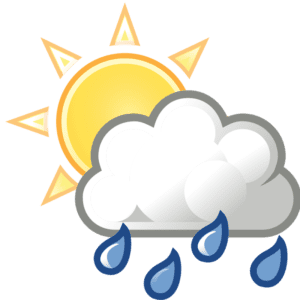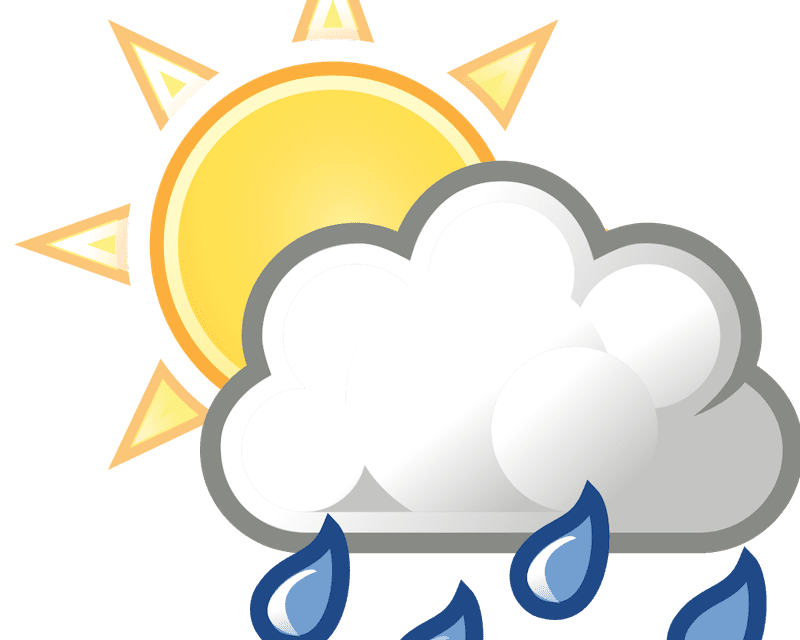 “But nobody does anything about it.” This quote is widely attributed to Mark Twain, but it doesn’t appear anywhere in his writing. But so what? It’s true.
“But nobody does anything about it.” This quote is widely attributed to Mark Twain, but it doesn’t appear anywhere in his writing. But so what? It’s true.
Gardeners, especially, whinge about the weather all the time. But like everyone else, there’s nothing we can do about it.
But we can prepare our gardens with defenses to withstand whatever nature throws at us. Sure, we will inevitably lose plants to the vagaries of weather, but cutting those losses is an achievable goal.
First of all, ‘Right Plant – Right Place’: the landscape mantra. And that doesn’t mean just aesthetically. Pay attention to the sunlight in your garden. Even plants that say “Full Sun” on the label, might gasp and die during an extended hot spell. Our summer sun is brutal. Of course, summers elsewhere get as hot or even hotter, but it’s not likely that they will have both the heat andhumidity, day and night, of a Lowcountry summer.
So do your homework before you put a spade in the ground.
For example, your best guide to what will withstand all-day overhead sun is to look around you. Commercial and street plantings are good indicators that they are tough as nails. Ask your friends and neighbors if they have had experience with the plant you’re thinking about.
The vast majority of plants that flower need sunlight. However, it’s surprising how many get along without much direct sunlight. Some will do just fine as long as they’re in a bright area. Garden guru Alan Armitage says that almost any plant can take morning sunlight. It’s the afternoon sunlight we need to be beware of. Food crops, except for leafy greens, usually need at least six hours of direct sunlight to thrive.
Check the tree canopy overhead. What started out as a sunny backyard may have become less so due to the growth of trees. Some dappled sunlight will usually percolate through tree foliage, but even that can be increased by judicious pruning of overhead branches.
Providing water in times of drought is essential to the survival of most plants. Down here in the Lowcountry, some type of irrigation system is necessary, even if that irrigation system is you holding a hose. Because our summer nights cool down little, if at all, plants continue to transpire water without ceasure. Even with our high humidity, some supplemental watering is necessary.
I usually advise that we turn off our automatic irrigation except in periods of drought, and turn it on manually whenever supplemental water is needed. Your lawn and plants will tell you when they need it. If you can see footsteps on your turf, you need to water it. Drooping foliage before sunrise or after sundown is another indication that the ground is dry and roots need water. Mid-day droop in summer is normal.
Water is our most precious resource, and pollution is making inroads on our supply. Don’t waste it by needless irrigation. If you must use an automatic irrigation system, check the rain gauge on it often. It’s a common sight to see sprinklers going in the midst of a rainstorm. How wasteful is that?!
Hungry plants are less able to withstand harsh condition than those that have been fed regularly. Soil here is mostly sand, with sparse nutrients, and no natural method of renewing what’s there. For the most efficient use of expensive fertilizers, take a sample of your soil to the Extension Office for analysis. Clemson will tell you exactly what kind and how much fertilizer you’ll need for optimum results.
And I’ve told you before, but it’s worth repeating: Don’t waste your money, time and effort applying ‘weed and feed’ products to your lawn. The chemicals for weed control need to be applied in very early spring, and lawns don’t want to be fed until they begin greening up.
Back ‘to Right Plant – Right Place.’ Nag, nag, nag. But they all repeat it – Master Gardeners, landscape architects, garden designers and ecologists. I’m one of the worst offenders of ‘pushing the envelope’ of plant selection, but I do try to plant into an area of my yard that most mimics the plant’s own neighborhood, so to speak.
Plants with the same cultural needs make good playmates, and normally, I try to keep the Sharks and the Jets apart, but if the area seems monotonous, I’m willing to mollycoddle a plant or two from another neighborhood to brighten the area.
So it’s true. You can’t actually do anything about the weather, but you can modify your garden. And you can modify yourself to the weather in the summer, at least, with a white wine cooler and a broad brimmed hat. And maybe a hammock and a nap. Works for me.







